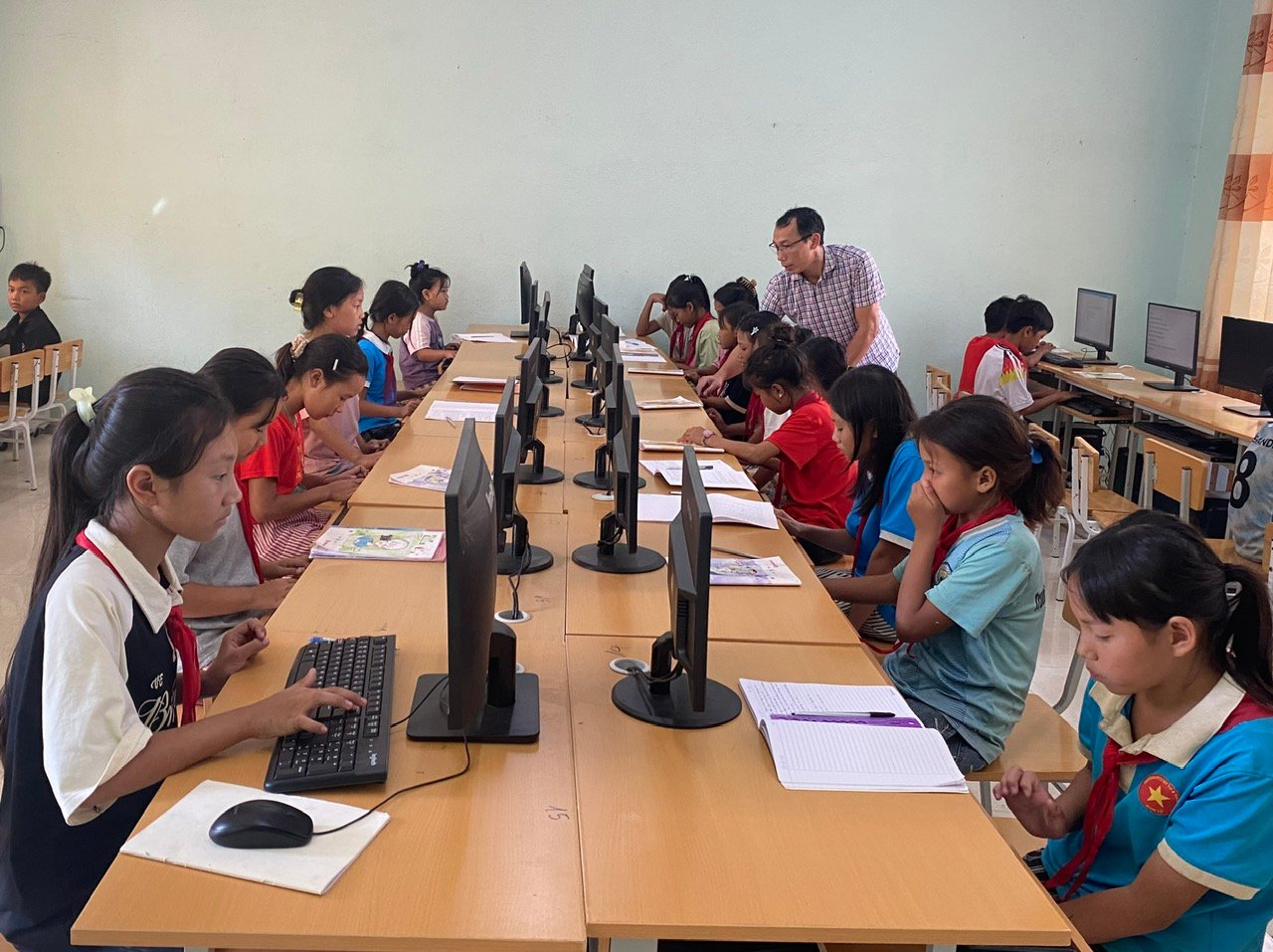
IT class of teachers and students of Bum To Primary and Secondary Boarding School for Ethnic Minorities (Bum To commune).
Schools and classrooms are well-invested.
Going back in time, since the separation and establishment of the province in 2004, education in general and boarding schools in particular in Lai Chau have faced numerous difficulties. Most schools lack classrooms, many schools are built with bamboo and thatched roofs. Students in remote areas have to walk long distances to get to school, which causes many students to drop out of school.
Despite limited budget revenue, the province is still determined to allocate resources for boarding work, ensuring learning opportunities for students in mountainous areas. In addition to effectively implementing central support policies and decisions, the province has issued practical and timely support resolutions such as: Resolution No. 35/2016/NQ-HDND dated July 28, 2016 of the Provincial People's Council on supporting centralized cooking costs for preschool children and boarding school students, supporting 91,783 students with a total budget of VND 8,703 million; Resolution No. 04/2022/NQ-HDND dated March 29, 2022 of the Provincial People's Council stipulating the level of food support for boarding students in communes, villages and hamlets in Region III, which were converted to Region I, with 32,285 students receiving benefits, with a total budget of VND 42,022 million.
These humane policies have helped thousands of students in remote areas maintain their studies, significantly reducing the dropout rate, creating a solid foundation for the education career in ethnic minority areas. If in the 2004-2005 school year, the whole province had only 54 schools with students staying at school in the form of boarding with 2,447 students, by the 2025-2026 school year, the number increased to 41,384 boarding students in 85 ethnic minority high schools and 62 high schools with boarding students.
According to Mr. Mac Quang Dung - Director of the Department of Education and Training, up to now, most of the DTBT primary schools have been fully equipped with classrooms, multi-purpose halls, kitchens, dormitories for students, playgrounds - training grounds and auxiliary works serving living, studying and practicing life skills. The total number of classrooms in the province reached 7,332, of which 5,840 were solid classrooms, reaching 79.7%, contributing significantly to stabilizing the scale of schools and classes, meeting the learning needs of students in mountainous and disadvantaged areas.
Improve the quality of comprehensive education
Investing in facilities and synchronous equipment for boarding schools not only contributes to improving the learning and living conditions of students but also improves the quality of education and training. Regarding the quality of mass education at primary ethnic minority schools, the completion rate of the primary school program is 100%. The rate of students with academic grades of satisfactory or higher in secondary ethnic minority schools is 99.1%. Over 99.9% of ethnic minority schools have graduated from secondary schools, and the rate of high school graduates admitted to universities and colleges has also increased sharply: from 30.1% (in 2021) to 44% (in 2025), the highest level since the separation and establishment of the province. The quality of key education has been improved. From the 2020-2021 school year to the 2024-2025 school year, DTBT secondary schools have 3,875 students achieving excellent student awards at all levels.
This school year, Bum To Ethnic Minority Primary and Secondary School (Bum To Commune) has more than 700 boarding students. With the motto "boarding school is the second home", the school established a Boarding Student Management Team; developed educational models associated with life skills, and established a dance and music club.
Teacher Dinh Ngoc Linh - Principal of Bum To Primary and Secondary School for Ethnic Minorities shared: Right from the beginning of the school year, the school has promoted the role of homeroom teachers and boarding teachers to support students in their daily activities and studies. Mobilizing social resources and contributions from parents to rent cars to take boarding students to school every Friday and Sunday afternoon. Thereby, the attendance rate has reached over 98%.
Concentrate resources on building inter-level boarding schools
Although it has been invested and upgraded, due to the limited budget of the province, the investment in facilities and equipment for ethnic minority primary schools has not met the requirements. Immediately after the Politburo issued Notice No. 81-TB/TW, dated July 18, 2025 on the policy of investing in building schools for border communes, the Provincial Party Committee Standing Committee took drastic, methodical and responsible action; directed the review of land funds, master plans, site clearance and selection of locations to build schools to ensure synchronous infrastructure.
Based on the Party's policy, Lai Chau province will have 11 inter-level boarding schools for primary and secondary schools. Of these, the first 5 schools will start construction in 2025. Currently, 3 schools in the communes of Pa Tan, Bum Nua, and Phong Tho have started construction; 2 schools in Hua Bum and Dao San communes held groundbreaking ceremonies on November 9; striving to complete and put into use in the 2026-2027 school year. At the same time, the province has also surveyed, selected locations, and prepared sites for the remaining 6 schools expected to start construction in 2026 in the communes of Sin Suoi Ho, Si Lo Lau, Khong Lao, Pa U, Thu Lum, and Mu Ca, ensuring synchronous infrastructure, ready to deploy as soon as capital is available.
Talking to us, comrade Le Van Luong - Deputy Secretary of the Provincial Party Committee, Chairman of the Provincial People's Committee said: With the consistent goal of building a sustainable, comprehensive and humane boarding school, the province continues to review and plan a network of schools and classrooms scientifically, in accordance with reality. Prioritize resources, integrate central and local capital sources, national target programs to solidify and synchronize the system of boarding rooms, dining halls, sanitation facilities and clean water. Invest in equipment and supplies for living and studying, ensuring that the living and studying conditions of the children are increasingly better and safer. From there, the model of boarding schools is increasingly developing, truly becoming a solid "cradle", lighting up the dreams and ambitions of the young generation in the border areas, contributing to training high-quality human resources, serving the cause of sustainable development of the province.
Source: https://baolaichau.vn/giao-duc/mo-hinh-ban-tru-tiep-suc-cho-hoc-sinh-vung-cao-1046047










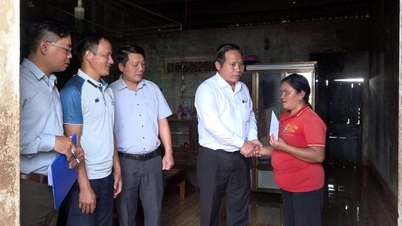














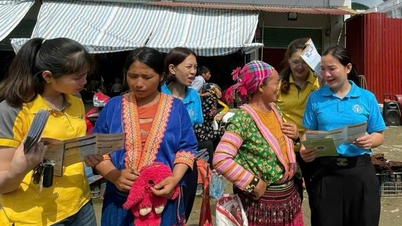






































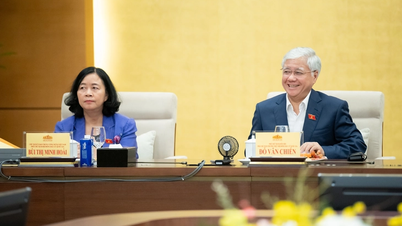









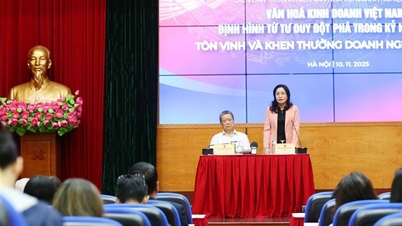






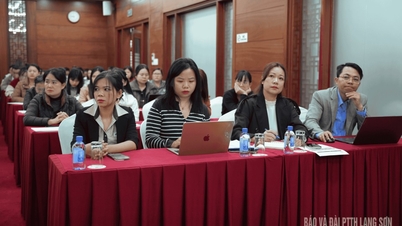



![Dong Nai OCOP transition: [Article 3] Linking tourism with OCOP product consumption](https://vphoto.vietnam.vn/thumb/402x226/vietnam/resource/IMAGE/2025/11/10/1762739199309_1324-2740-7_n-162543_981.jpeg)











Comment (0)